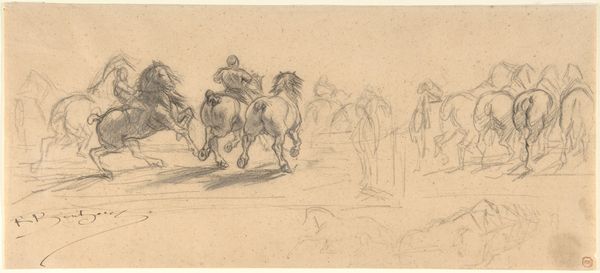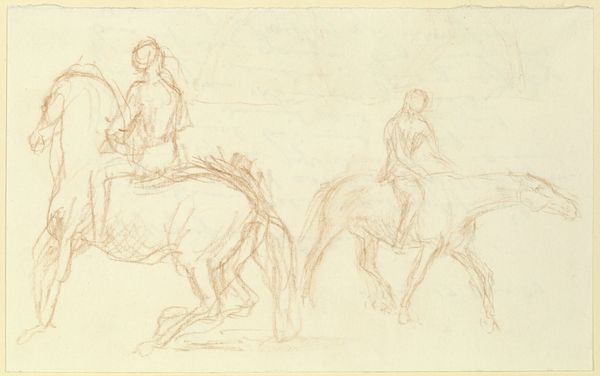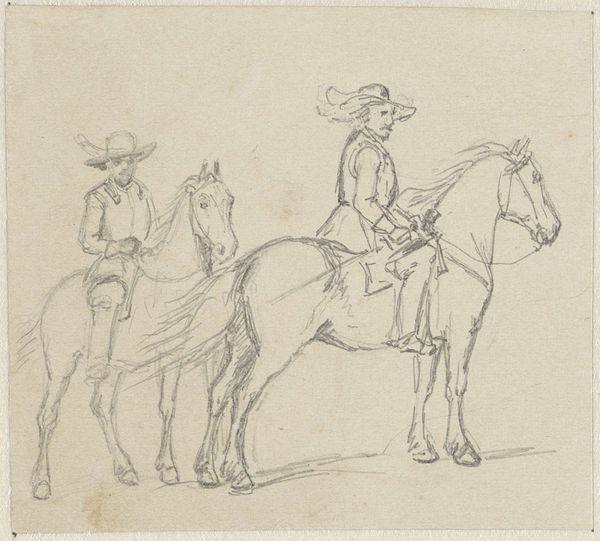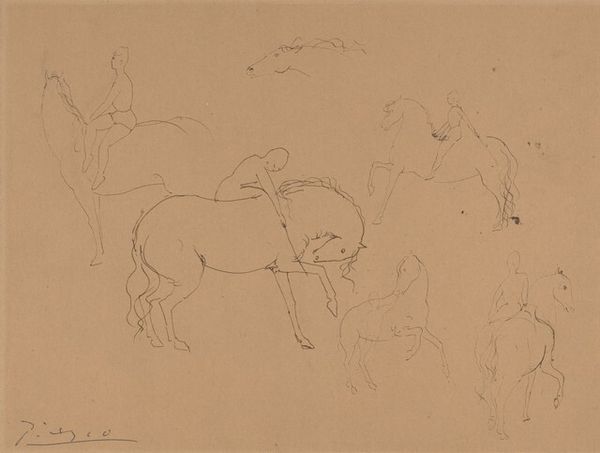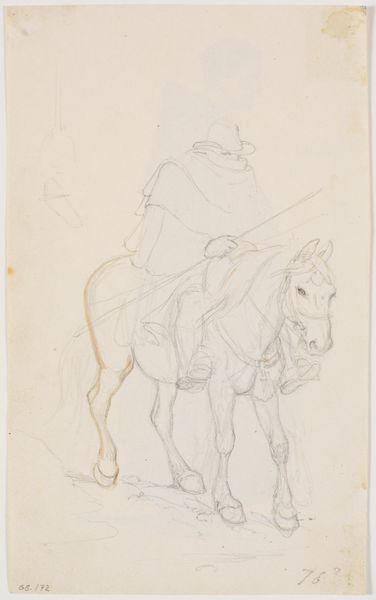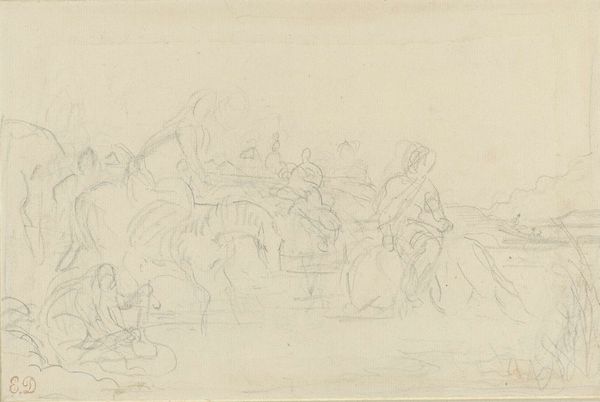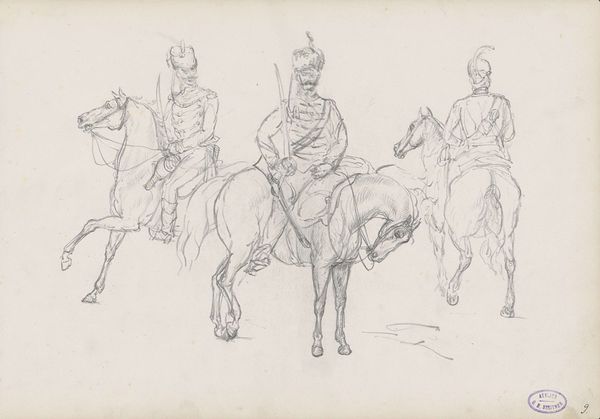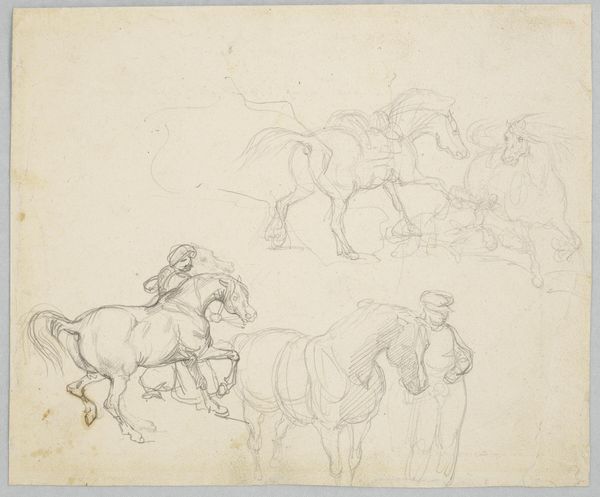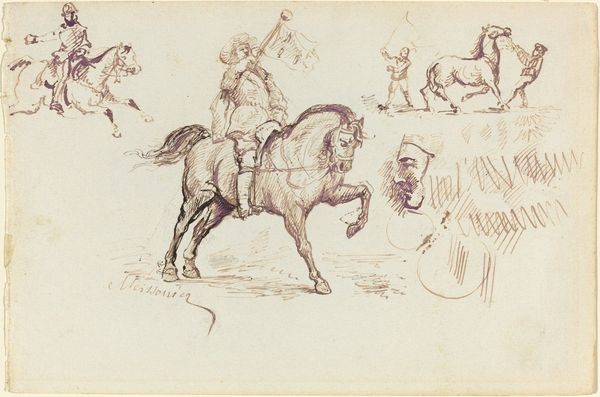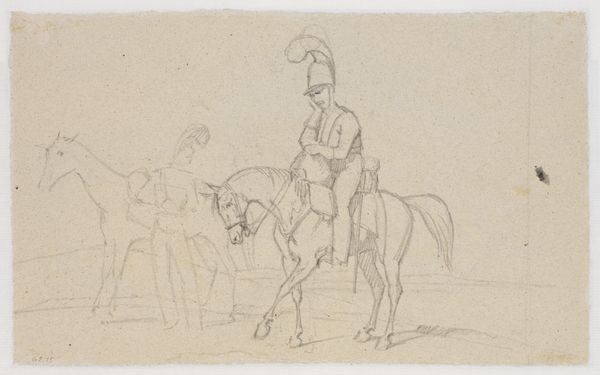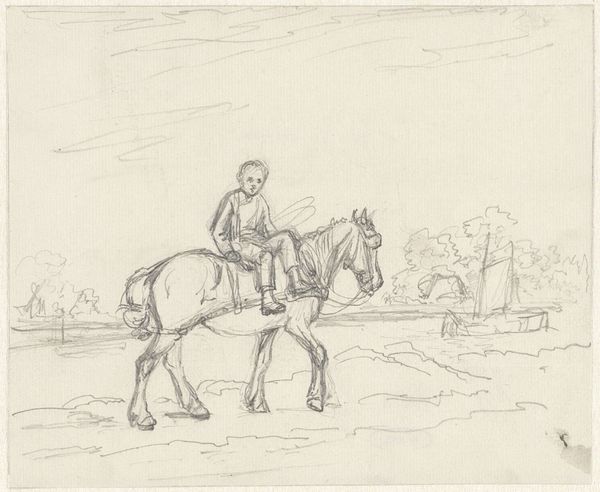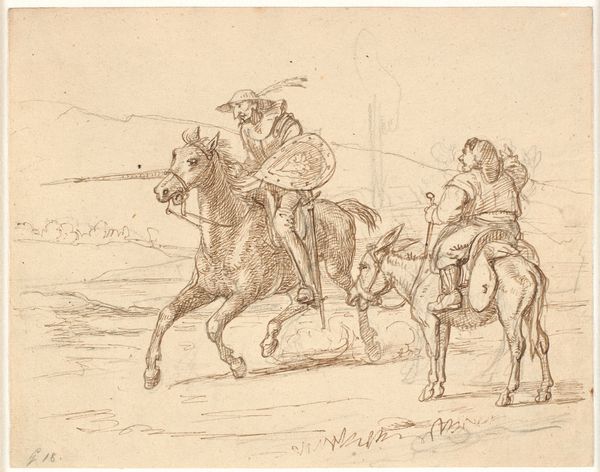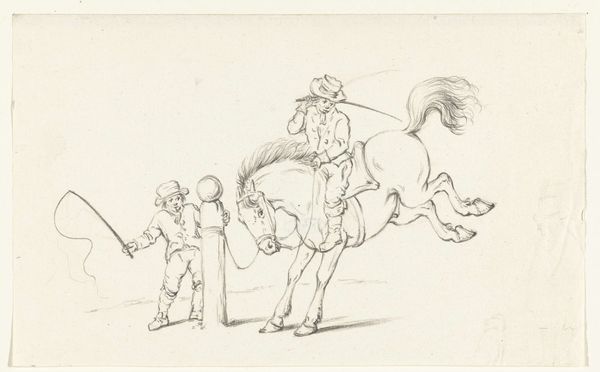
Dimensions: height 255 mm, width 326 mm
Copyright: Rijks Museum: Open Domain
Curator: It's an ethereal pencil sketch, wouldn't you say? It feels like looking at a memory. Editor: It does, but a somewhat heroic one! This is Edgar Degas’s "Ruiters," created around 1860. What strikes me is how light and airy it seems for a drawing depicting riders – figures often associated with power and authority. Curator: Power doesn't always need to be bold, does it? Notice how the lightness and incompleteness contributes to a sense of myth-making. It isn't about a specific battle; instead it captures the enduring idea of the mounted warrior or traveler. Consider the historical connotations: horseback riding was for centuries associated with class privilege. The drawing gestures at this history but doesn't commit, so to speak. Editor: Absolutely. The sketchiness almost democratizes the image, as if he's trying to capture the concept rather than a particular elite. It also points to Degas’ broader interest in capturing movement. Those very light lines on the right-hand side are dynamic! Were horses in motion an obsession in art history around that time? Curator: They were increasingly symbols of modernity itself! But also consider how, even within the context of Romanticism which lingered strongly then, Degas pulls back from complete idealization. The slightly awkward rendering of the donkey on the left—almost comical—grounds the drawing in reality. He plays with cultural memory by layering different, slightly contradictory symbol systems on top of each other. Editor: Do you think the "unfinished" quality speaks to something? Is he experimenting with form, maybe hinting at the fleeting nature of the depicted reality? Curator: Incompleteness is an established aesthetic. It reflects how memory is incomplete. But I’d also suggest that leaving sketches, “sketches,” was also a way for privileged, trained artists to display that level of learned effortlessness. What seems incomplete to some looks refined to others, precisely *because* it appears to lack labor. The appearance of innate genius, so to speak! Editor: It's a drawing that manages to feel both monumental and intimate. A private glimpse into a grand historical narrative. Curator: Indeed. And how cleverly Degas uses light pencil work to suggest both historical echoes and the ongoing evolution of imagery in culture!
Comments
No comments
Be the first to comment and join the conversation on the ultimate creative platform.
